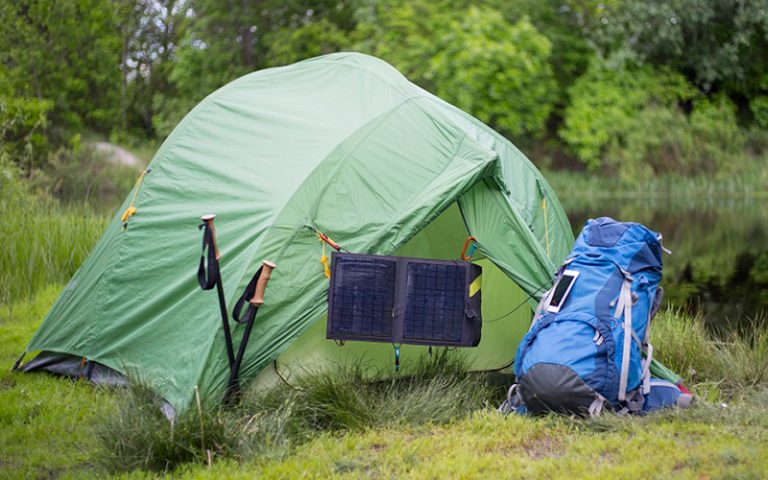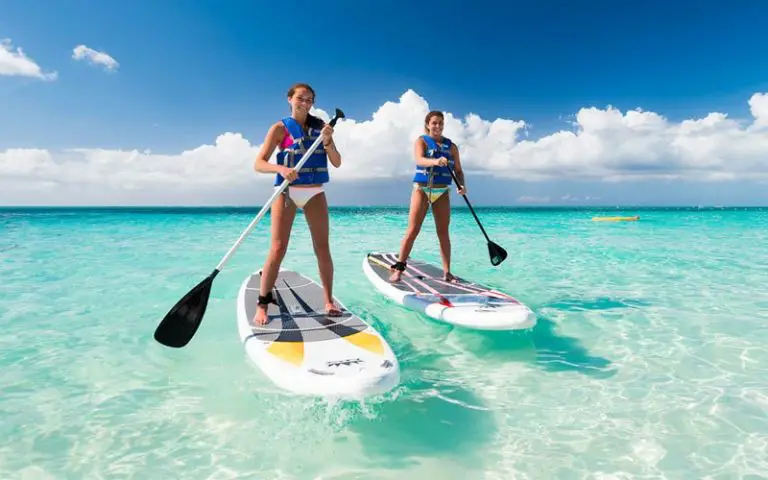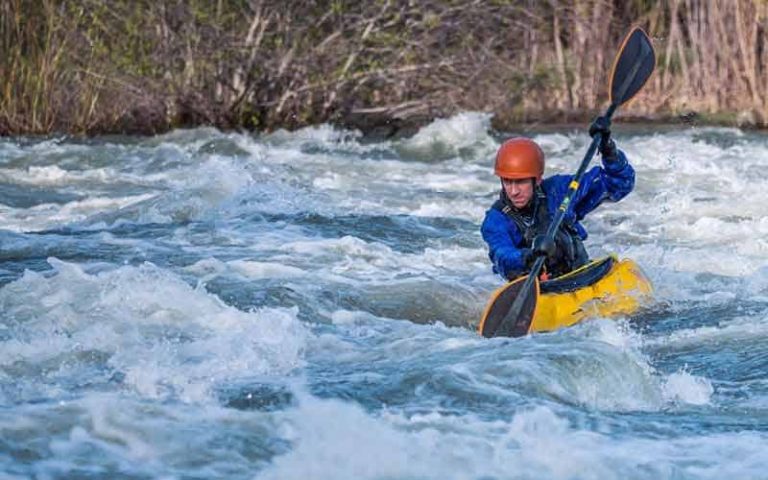What Makes A Good Life Jacket?
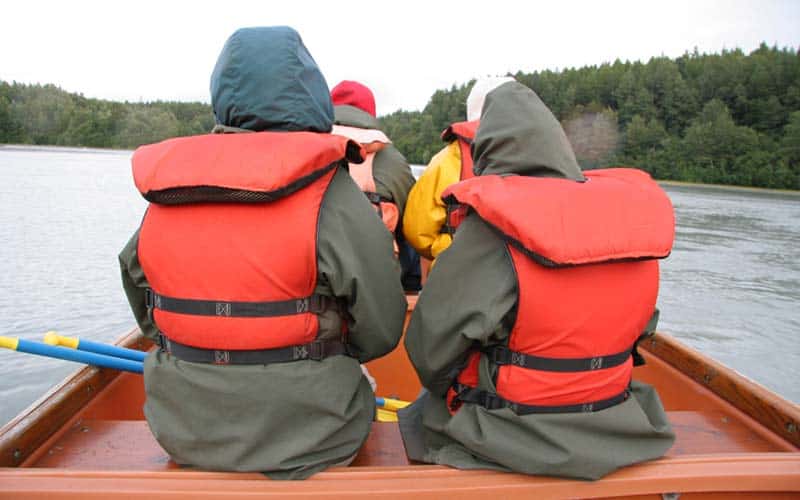
Share this article:
TopNotch Outdoor is independent – we research, test, and rate the top products to help you make the right buying choice. We sometimes use affiliate links and may receive a small commission on your purchase. Learn more…
So, you know how much personal flotation devices (PFD) like life jackets will keep you safe in the water.
But how do you recognize a good life jacket to use for boating, kayaking, tubing, fishing, or other watersports?
Let’s discuss the What Makes A Good Life Jacket? history, types, manufacturing process, and features that make a good flotation device for use on the water.
Life Jacket
A life jacket is a piece of kit that provides flotation on water. And there are different types of this personal flotation device (PFD) available on the market today.
SOLAS (Safety Of Life At Sea) Life Jackets
SOLAS life jackets will provide you with the most safety by keeping your head above the water line during your activity on the water. This kind of life jacket is built to quickly flip to make sure your head rises above water during an accident. You can use it on a boat or other vessels.
Standard Life Jackets
A standard life jacket is slower than the SOLAS life jackets in turning your head against the water. Life vests are suitable for any range of motion during boating, kayaking, and a variety of other watersports.
Small Vessel Life Jackets
Of all the three vest types, the small vessel life jacket provides the least safety on water. These life jackets take longer to perform, and they are most suitable for use on smaller boats and kayaks.
History
Until the 1800s, people used animal skins, inflated bladders, or wooden blocks as a form of flotation device. The earliest design of the modern life jacket is attributed to Captain John Ross Ward, who made life jackets out of cork shavings for his boat crew.
Raw Material
The raw materials used for life jackets have now changed. Most PFDs have their outer shell made of vinyl or nylon material, with various bits of styling. Inner parts of life jackets are often plastic foam or just air.
The Manufacturing Process
Here’s how the process goes:
Creating markers
A plotter creates a stencil of the design pattern on sheets of white paper called markers.
Preparing the nylon
A piece of nylon fabric is rolled out on a surface and smoothed with a spreader. The plotter then places the marker on the nylon.
Cutting the pattern
The nylon is cut into the desired shape manually with a motor-driven knife or a machine.
Cutting the foam
The foam is trimmed into the required thickness and taken through the pattern cutting process. The reflective tape and attachable pieces are then prepared.
Assembling the pattern pieces
Sewing professionals assemble the parts of the vests, creating different styles and designs.
Finishing
Finally, the plotter attaches straps, reflective tapes, snaps, logos, and brands the PFDs. The life jackets are then packaged and sent out for distribution.
Classification of A Life Jacket
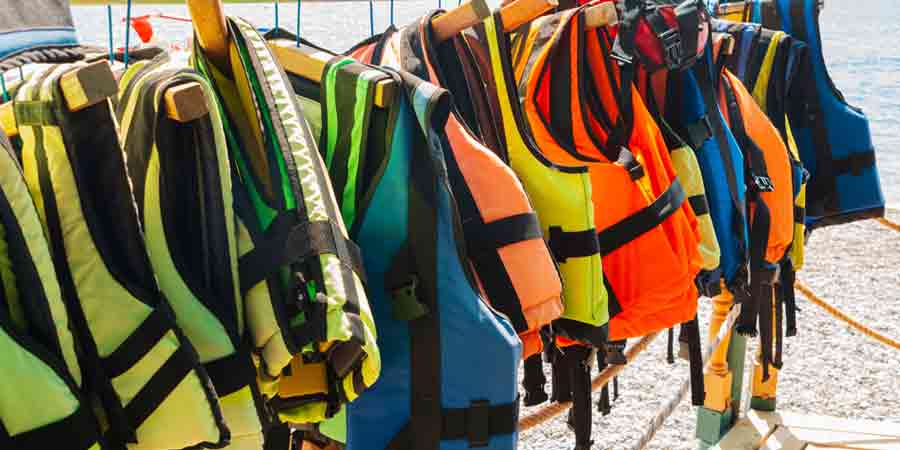
There are different types of life jackets for your favorite sports.
Inherently Buoyant
These life jackets are durable, using plastic foam as their interior material. They are suitable for paddle boarders on rough or remote water.
Hybrids
These life jackets use both natural buoyancy and manual inflation. They are more comfortable and come in different sizes to give a more snug fit than the inherently buoyant PFDs.
Inflatable
This type of life jacket uses air to provide flotation. This PFD is very comfortable and compact. The flotation devices are automatically filled with gas when they need to provide flotation. The PFD is suitable for tubing in troubled waters.
Requirements and features of a life jacket
United States Coast Guard Approved
Whether it’s a Type I PFD, Type II PFD, Type III PFD, Type IV PFD or Type V PFD, you want to make sure that your life jacket is U.S Coast Guard approved.
Quality Control
Quality control is essential for PFDs. The US Coast Guard monitors life jackets to make sure that they have sufficient buoyancy to lift you above water without sacrificing your comfort.
For a PFD to be approved by the Coast Guard, it must meet the required standards.
Understand Your Life Jacket Labels
Every PFD comes with a label. These labels will show you the sizing, proper use, care instructions, life jacket type, and more.
For your safety, pay attention to the instructions and information on the life jacket labels. For example, don’t use Type III PFDs or Type IV PFDs where Type II PFDs are required.
Why’s that?
You most likely won’t get the required buoyancy, visibility, or comfort with them.
Choosing Your Life Jacket
Look out for these when considering life vests:
A Good Fit
A life vest has to be a good fit, especially for a child. Make sure you choose the best size available on the market, considering the chest size or a child’s weight. Go for one approved by the U.S Coast Guard with adjustable shoulder straps or buckles that will allow you free movement.
Life Jackets Standards
People need life vests for a variety of watersports, including kayaking, fishing, tubing, and swimming. Make sure you choose a U.S Coast Guard approved PFD for your desired sports.
Conclusion:
What Makes A Good Life Jacket
Apart from being U.S Coast Guard approved, make sure the vest you want to buy will fit you or your child well.
Watch out for comfort, bear in mind your type of watersports, and finally you can consider style.
Whether you want to go boating, kayaking, swimming, fishing, or you just want to go to a relaxed place on your kayak, take along a suitable life vest – you might be thankful for it.
Related:The Best Life Jacket – Definitive Guide (2024)

![15 Best Off Grid TV Shows <br>You Need To Watch [Updated] 15 Best Off Grid TV Shows You Need To Watch [Updated]](https://topnotchoutdoor.com/wp-content/uploads/2022/12/Off-Grid-Shows07-768x480.webp)
![Toddler Life Jacket Coast Guard Approved<br>Definitive Review ([currentyear]) Toddler Life Jacket Coast Guard ApprovedDefinitive Review (2024)](https://topnotchoutdoor.com/wp-content/uploads/2021/03/Toddler-Life-Jacket-Coast-Guard-Approved-FI-768x480.jpg)
![10 Best Life Jackets: Definitive Guide ([currentyear]) 10 Best Life Jackets: Definitive Guide (2024)](https://topnotchoutdoor.com/wp-content/uploads/2021/03/Best-Life-Jacket-FI-768x480.jpg)
